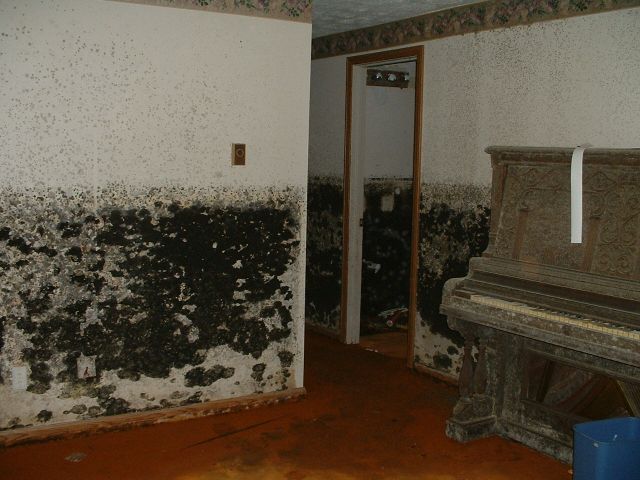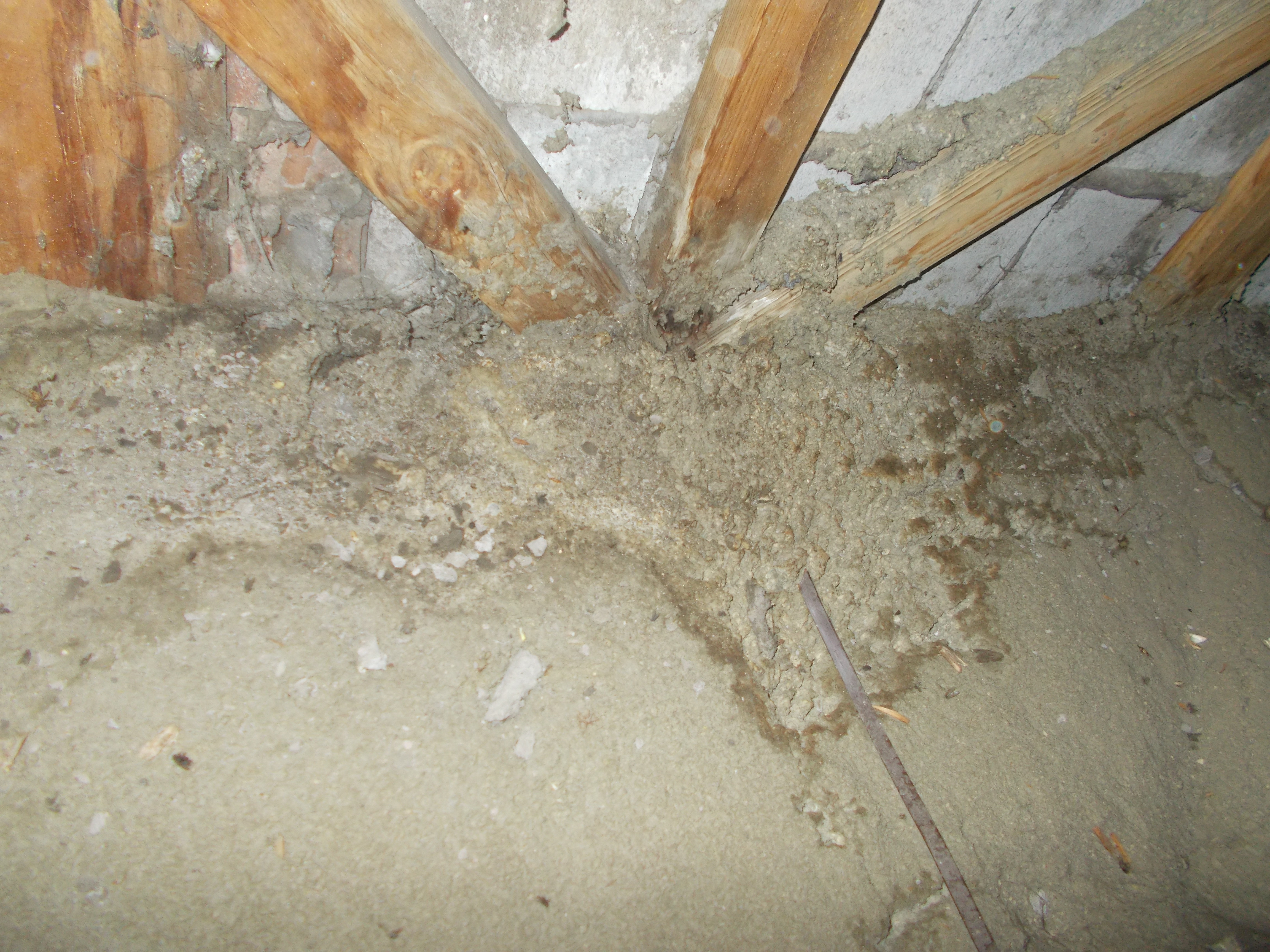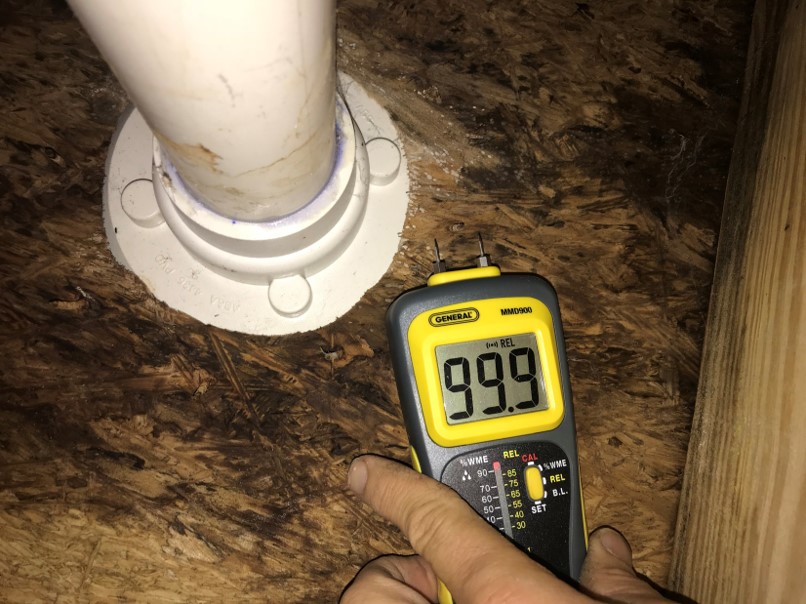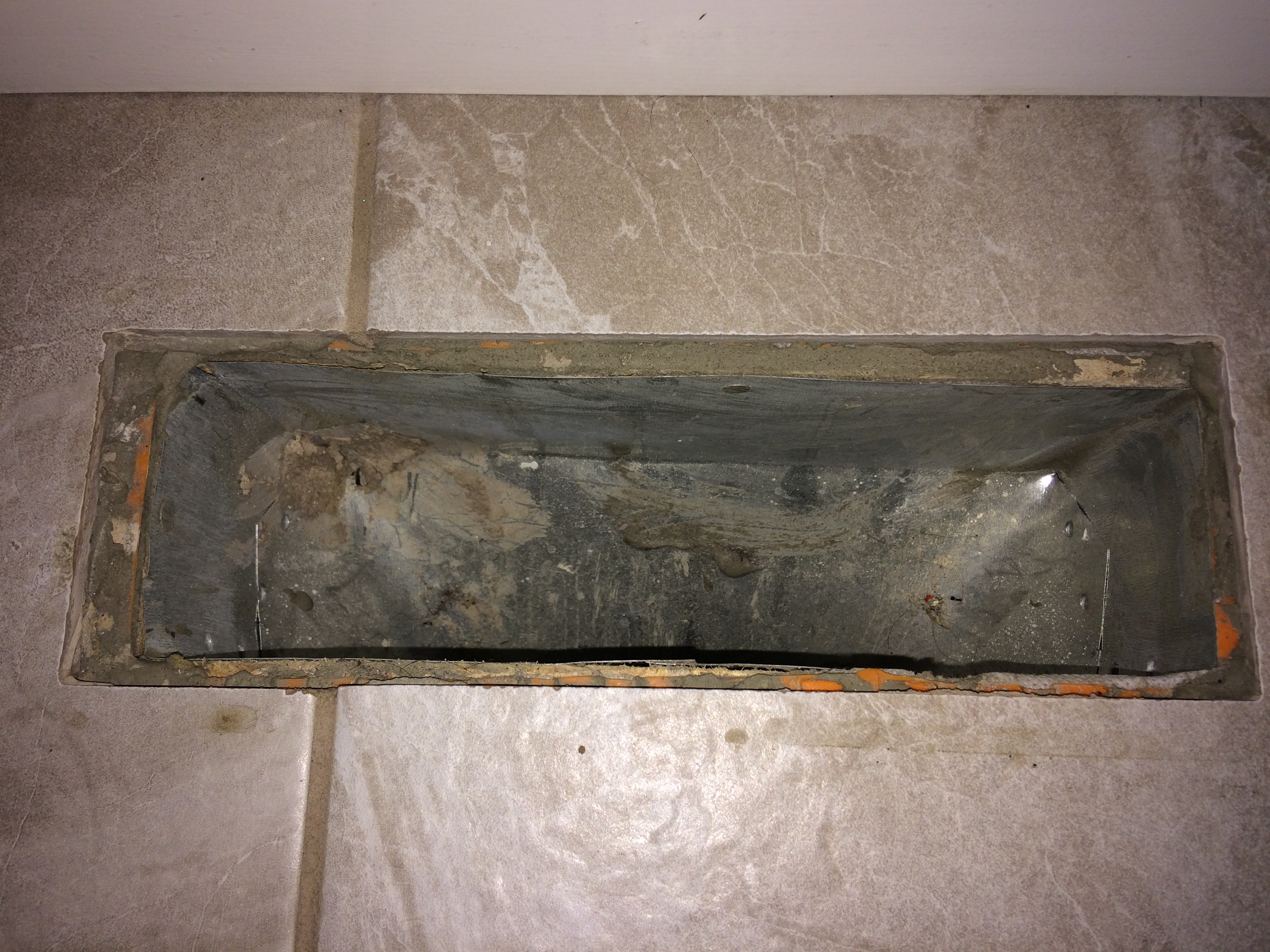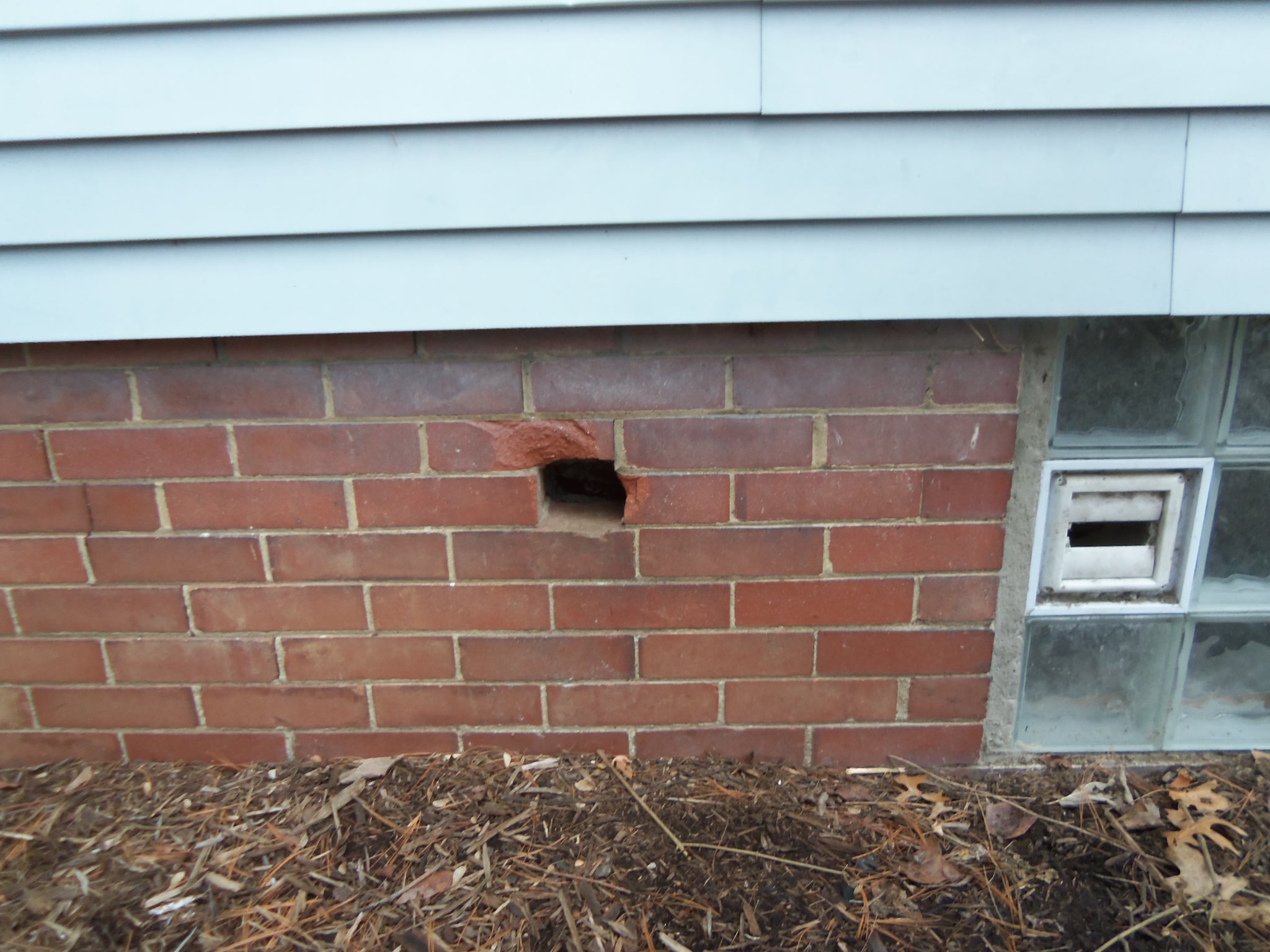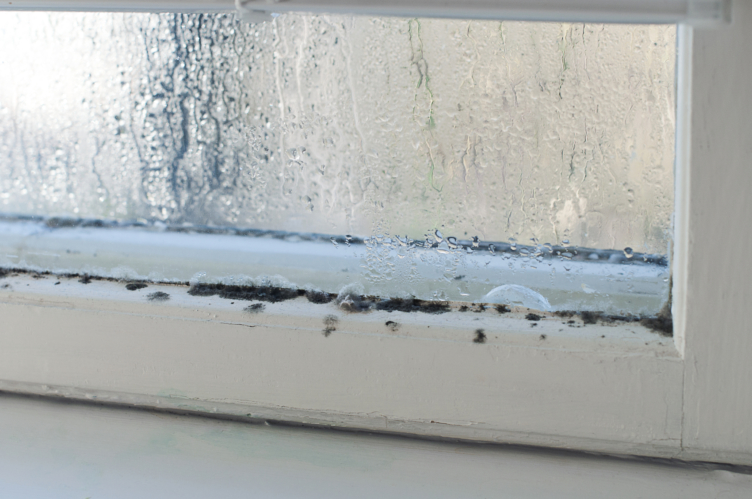In the image I selected, there is an inspector on a ladder, with a cell phone. I noticed he did not have the point of contact recommended by many ladder safety programs. He is not aware of his surroundings while speaking on the phone. Lesson learned-use a hands free bluetooth device or wait until the inspection is over. He could also get off of the ladder if this is a critical or time sensitive call.
This picture shows an active leak at the gable end of the attic, the flashing at the intersection where the roof meets the brick chimney is not properly installed. The wood in this area is stained and the truss fasteners are rusted and loose from extended exposure to water. I recommend evaluation by a structural engineer to determine a plan for repair.
The first step in combatting mold growth is not allowing an environment that is conducive to mold growth.
Controlling moisture and immediate clean-up of standing water cused by flooding or leaks is an important place to start.
Once mold starts to grow it must be removed completely, abrasive blasting is a new technique that is proving to be less tedious and time consuming than traditional methods while maintaining a high level of effectiveness.
The image above is a picture of a furnace. The bottom of the furnace shows signs of rust and mildew. Rust has also built up within the secondary heat exchanger and ribbon burners. Replacement or repair is recommended for this furnace.
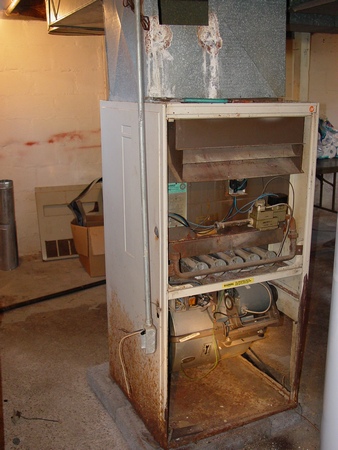
Reading the article on “Biological Pollutants in the Home” I’ve learned that they can be a major cause of days lost from work and school. Some can damage surfaces inside and outside your house. Biological pollutants can travel through the air and are often invisible.
When conducting a crawl space inspection; I found insulation that was laying on the ground that had water stains on the wood directly above the wet insulation. The moisture meter showed elevated moisture readings of 99%. A professional plumber was called and he found that the seals had failed on the toilet causing a leak.
This is a photo of a furnace and water leaking for underneath it. This is water intrusion into the basement and can be a source of mold growth. The leak needs to be fixed and water cleaned up to prevent any problems in the future.
The furnace humidifier was looked at on the inside and the appliance of mold growth was observed. This unit needs tone cleaned on a regular basis to make sure the growth of mold does not continue. This can be a problem in the future if not maintained.
Most of the time a wet basement is the result of moisture entry from the outside through the foundation walls. Many times the moisture is from a lack of proper sloping of the dirt next to the home. We suggest a gradual slope away from the foundation at least 15’ from the house. We also encourage the installation of gutters and downspouts that extend 6’ to 10’from the foundation. If the home has any hills or sloping toward the foundation or house; we encourage a swallow ditch be dug at least 15’ from the home to divert water away from the home. Any moisture in the basement encourages mold growth.
The picture attached is mold growth on the roof sheathing and roof truss from inside the attic of a home. This can be caused by incorrect roof ventilation, which leads to attic not venting properly and building moisture. Wood and drywall are perfect feeding sources for mold. If the attic is ventilated properly, this could also be caused by bathroom exhaust fans being vented into the attic instead of outside.

The picture that I studies was labeled bathroom fan venting. This picture shows how a properly installed bathroom vent should look. All vents should be vented through the roof or the side of a house. They should never be vented in a soffit.
For this inspection and writing assignment, I inspected my air filter for my HVAC unit. I inspected the HVAC system for mold and also inspected the filter. Everything was dry and there was no visual mold growth. I am waiting on my equipment to take samples etc but none needed as nothing visually seen upon inspection. Also, no musty smells. All looked good!
I am completing this research and writing assignment on the gallery image titled “mold pump”. I am very interested in learning the different types of mold pumps and brands etc. I like to use top of the line equipment so choosing which mold pump to use is very important to me. The one in the pic looks pretty old compared to ones I am looking into.
The photo is of a heat register. I inspected the HVAC system of a residential building to check for mold. The bottom of the ducts were a little dirty but no mold was visible. The furnace was clean and the filter looked brand new. No odour was smelled. I dont believe there to be mold in the HVAC system at this time. It is important to inspect and clean the HVAC system on a regular schedule.
Central humidifiers are devices that add humidity to the air as the furnace is heating it. This is done to make the occupants more comfortable. I know that when the humidity is low I tend to snore more than when the humidity is up.
The water used by the central humidifier automatically enters through the house hold plumbing and the level is controlled with a float valve.
Dry air can cause many problems including dry skin, static electricity, cracks in wood which include floors, furniture and cabinets as well as musical instruments like pianos, guitars and violins.
Over humidifing can create a whole new set of problems from condensation to mold and respiratory diseases.
This is a picture of a missing brick in the brick veneer of a house I inspected. I noted this as a point where moisture could enter the envelope of the house. Moisture intrusion is very conducive to idal conditions for mold growth.
I read the article “Mold, Moisture and Your Home”. The key to controlling mold in a home is moisture control. Molds are a natural part of the enviroment. Molds travel through the air as tiny spores. There are many different types of mold.Mold can grow anywhere there is water or moisture.
Here is a picture of a window that appears to have microbial growth on it. At first glance I can tell there is a significant amount of condensation between the two window panes. I would take a close look at the condition of this window to determine where the entry point is for this moisture build up and then report it in the home inspection report and take pictures and/or show the client in person.
I read about clothes closet lighting. It reports on the danger of having this high heat source in close proximity to combustible items such as clothing or boxes. There are minimum distances that must be maintained between luminaires and the combustibles to make it safe, so these are good to know as this is a subject that is easily overlooked.
As you can clearly see In the picture provided, thanks to the internachi gallery, there has been obvious neglect of the property as a whole. Large spots of black mold like build up gives the suggestion of a few things. Was this cause by water intrusion as result of structal damage from a combination of the age of the home and weather conditions or just complete neglect or possible abandonment by home owners?! Most likely prolong exposure in such a condition would sway towards healthy issues.
